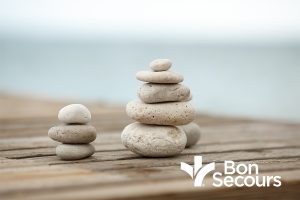Introduction to Meditation
Meditation, also called mindfulness, is an ancient tradition that has modern health benefits. You can learn to meditate at home, and it requires no special equipment.
What is meditation?
Meditation is slowing your thoughts down—literally. Your brain waves slow down to half as fast as they are when you’re thinking normally. Your brain naturally produces these slower brain waves when you sleep, but learning to meditate lets you also produce them when you’re awake.
What are the benefits of meditation?
Regular meditation has been shown to have a number of health benefits, including:
- Lower blood pressure
- Less anxiety
- Less stress
It may also help with depression and pain, although traditional treatments such as mental health therapy and physical therapy, respectively, or prescribed medications should not be discontinued without direction from your doctor. Studies are ongoing to see what other conditions meditation may help with.
How should I meditate?
You can meditate at any time of day, as long as you are in a quiet area where you are unlikely to be disturbed. You only need to meditate for 15-20 minutes once a day in order to see benefits.
You may learn meditation from in-person classes near you, via audio files/CDs, via websites, or via apps. Experiment to find the method that works best for you.
In Richmond, cancer patients can have meditation sessions with Marc McGahee; ask your cancer team for more information. He also teaches at the Cullather Brain Tumor Quality of Life Center.
Example Meditation Exercise
Marc McGahee, who helps cancer patients learn meditation to help reduce their side effects, provided a meditation exercise on gratitude.
Most of the time we’re only grateful for what we already have, but this exercise can help you be grateful for things you don’t have.
- Find a place where you will not be interrupted, sit down in a comfortable position, and close your eyes. Take several deep breaths and then imagine a white light emanating from the highest most wonderful part of the Universe reaching down and touching you. Allow this light to flow through every part of your body, relaxing from head to toe.
- Think of something in your life that you are truly grateful for. Spend a few moments enjoying this feeling.
- Get in touch with that feeling and anchor it into something you want to accomplish and feel this same level of gratitude for the new event.
- Now think of an activity that you enjoy doing but had to learn how to do, such as nursing, playing chess, riding a bike, knitting, cooking, etc. Choose something that you are proud to know how to do. Now focus on that positive feeling and lock it in.
- Think of the feeling of gratitude for the task you want to learn how to accomplish and add it to the positive feeling of having learned a new skill.
- Next, see, hear, and feel the future accomplishment as real with these feelings.
For more information or to find a healthcare provider near you, call 804-359-WELL or visit https://bonsecours.com/richmond/find-a-provider.
Sources: National Center for Complementary and Integrative Health, part of the National Institutes of Health; Marc McGahee
https://bonsecours.com/richmond/about-us/blog/introduction-to-meditation

Comments are closed